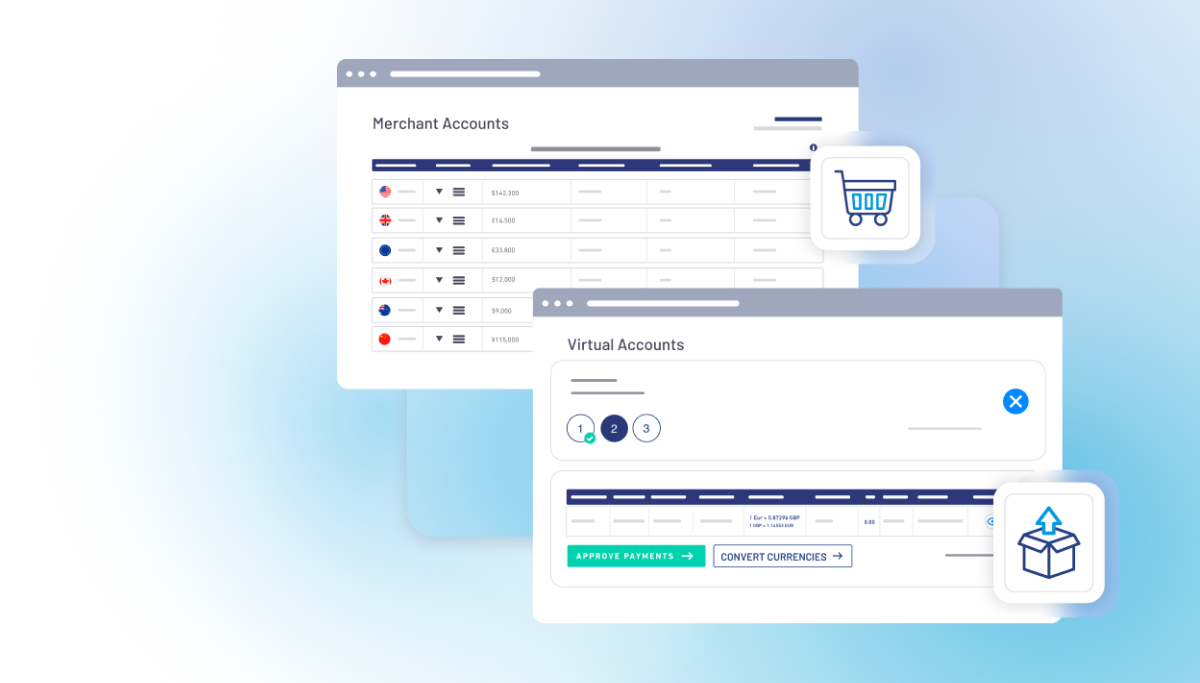The launch of FedNow has caused considerable excitement in the payment sector. It’s been long-awaited and anticipated, promising to help catch the United States up to the rest of the world when it comes to real-time payments.
A lot of digital ink has been used to discuss how FedNow will change payments for banks and businesses within the U.S., but how can FedNow interact with other instant payment schemes in other jurisdictions to facilitate payments internationally? How will it affect businesses trading in and out of the U.S. and the banks/FIs that facilitate those trades?
Firstly, a quick catch-up on FedNow itself.
What is FedNow?
FedNow is an instant, real-time payment network for banks, credit unions, and financial institutions in the U.S. It will allow eligible organizations that sign-up for FedNow to settle payments instantly with each other.
One of its unique characteristics is that it will operate 7 days a week, 24 hours a day, and 365 days a year, without any interruptions to the service. It is also a Real-Time Gross Settlement (RTGS) system, meaning settlements are made instantly for each individual payment and not done in batches.
How is it different from other U.S.-based instant payment schemes?
Without a government-backed real-time infrastructure, several consortium-backed alternatives have been created to fill the vacuum, including:
- The Clearing House's RTP® network
- The ACH Network
- The Zelle Network (an example of a peer-to-peer payment network)
These schemes all offer real-time or same-day payments, and they will all have their advantages and disadvantages, but they will almost certainly have stiff competition when compared to FedNow in a few key areas.
While these other payment schemes have the benefit of early moves into expedited USD domestic payments in the US as well as the attraction and experience of early adopting FIs and Corporates, FedNow will be operated by the Federal Reserve, giving it a unique level of trust and security. Secondly, FedNow offers some valuable features in terms of fraud controls, payment information and investigations, and configuration options to choose different types of payments to support via FedNow.
How will FedNow interact with instant payment schemes in other countries and regions?
Most pertinent to the questions we are asking today is how FedNow and other US schemes have interoperability with other global instant payment schemes.
All have been invaluable for businesses in the U.S., yet they pose an extra step or get bypassed in the international payment process.
FedNow has lots of potential, along with similar schemes in other countries, to eliminate these steps and create a highly efficient and integrated global instant payments network.
Of course, this global network is still limited initially because A) not every country and jurisdiction has instant payment schemes and B) FedNow has to be integrated with them, either directly or via payments networks, and C) banks need to be signed up for participation in them.
However, the potential is clear.

While there is huge potential, there is also a lot of work to be done to reach the vision of a global instant payment network.
The core challenge is connecting FedNow with other instant payment schemes around the world.
Through its use of message standards, FedNow already has interoperable building blocks with several other instant payment schemes, including the SEPA Instant Credit Transfer (SCT Inst) scheme in Europe and the Faster Payments Service (FPS) scheme in the United Kingdom. This provides the foundations for Financial Institutions, businesses, and consumers to be able to send and receive international payments between FedNow and these other schemes in real time – a real leap forward in instant international payments.
This will have several clear benefits for any organization paying in and out of the U.S. if they can leverage FedNow payment rails from a security, reliability, and cost-effectiveness perspective.
What is the process for connecting FedNow with other instant payment schemes?
The way FedNow has been built means connecting to other instant payment schemes around the world isn’t just feasible, it should be the end goal. The approach is similar to building your electrical sockets and plugs so that they fit anywhere in the world, meaning you don’t have to constantly buy adaptors depending on the country you’re heading to.
A simple but important example of this is that FedNow uses the ISO® 20022 standard for how its financial information is handled and processed. Once the right integration approach is in place, this should allow the data to flow easily between FedNow and other instant payment schemes that also use this standard.
FedNow’s security standards around compliance and regulations will also be similar to those around the world, allowing for integrated anti-fraud screening around risks like money laundering and sanction breaking.
These standardized processes and approaches allow for the nitty gritty of technological integrations to happen much more smoothly, and we should see more and more schemes connecting over the coming years as payment providers join them in their network.
How will FedNow affect U.S.-based businesses?
Research shows that 53% of U.S. businesses said cash flow management improves when using real-time payments technology, and 33% reported improved transparency in their payment processes.
There is a lot of hard data demonstrating how this technology can speed payment settlement, reduce costs, and increase transparency for international business payments. Real-time payments can change both how treasury and finance departments operate, and the value they can bring to their businesses. It feeds directly into their core objectives of driving efficiencies in payment processing, optimizing costs, aiding cash management, improving liquidity, and improving reconciliation practices.
FedNow will be a significant driver for the use of real-time payments for U.S.-based businesses and all the benefits that come with them.
On a wider level, real-time payments are essential to gaining a competitive advantage over other financial markets and economies. Compared to China, which saw 18.5 billion real-time transactions in 2021 (resulting in an estimated $15.4 billion in cost savings for consumers and businesses), the U.S. recorded 1.8 billion transactions (for a total cost savings of $648 million).
How will FedNow affect businesses trading in and out of the U.S.?
While FedNow is primarily, at least in this initial phase, going to impact domestic banks and FIs and their customers, it will also change banks and businesses outside of the U.S.
In time, banks outside of the U.S. will be able to access FedNow through correspondents and fintech partners, provided these institutions have been linked up already. Risk appetite amongst FIs to process certain payment flows for each other’s clients has contracted across the market due to recent bank failures like SVB and regulatory censures like those seen in the Crypto space, but the presence of ISO® 20022 standards will help provide greater visibility and transparency for FIs who choose to supply these services in the future.
As an example, a U.S. business trading in a foreign jurisdiction with a comparable to FedNow instant payment scheme (such as SEPA or FPS), should now be able to offer real-time international and cross-currency payments to those customers. This can help in terms of cashflow, knowing that payments won’t be delayed, held up, or revoked, improving the customer experience.
Suppliers and customers will know the payment has been received, and because the schemes are integrated, there will be no unknown costs or fees that can mean a difference in the amounts paid and received, thereby helping reconciliation, and reducing unnecessary communication between the payer and payee.
What effect will FedNow have on the future of global instant payments?
The U.S. has strangely lagged behind the rest of the world when it comes to instant payments. While it is only one of 60 countries in the world with real-time payments, a report by The Clearing House (a banking association owned by the world’s largest commercial banks) found that the U.S. needed 5 years to catch up with the rest of the world.
FedNow is a genuine step-change for the country and its instant payments infrastructure. While the U.S. has been playing catch-up in this area, once it gets involved in any global activity, it tends to drive the conversation and subsequent change from that point forward. The fact that FedNow’s initial service already includes value-added features and optional controls can be seen as a positive approach to both designing with scheme participants and end users in mind. Additionally, it has clearly learned from the experience and developments of similar real-time payment schemes, both domestically and internationally.
We can expect to see more innovation in the market, with instant payment schemes around the globe being linked up with FedNow, pushing the concept of instant payments to be ubiquitous across the world. This isn’t the beginning of a globally integrated instant payment infrastructure, but it’s a big step towards it.
This will bring its own challenges—instant fraud can result from instant payments, for example—but the benefits should far outweigh any downsides.
The future is instant
It’s no surprise that over the last 10-15 years, instant payment schemes have gained popularity and seen exponential growth in major markets and currencies around the world. By enabling real-time, 24/7 access to funds, the FedNow Service has the potential to transform how banks and financial institutions conduct transactions, enabling faster, more inclusive, and more cost-effective services.
As banks and FIs sign on to FedNow and it becomes increasingly a part of the U.S. payments network (and connecting outwards, across borders), it will probably experience unforeseen challenges and obstacles, but for now, we can say the future of payments is more instant than it was before.
To learn how TransferMate can support your cross-border payments, using multiple payment methods, click here.







